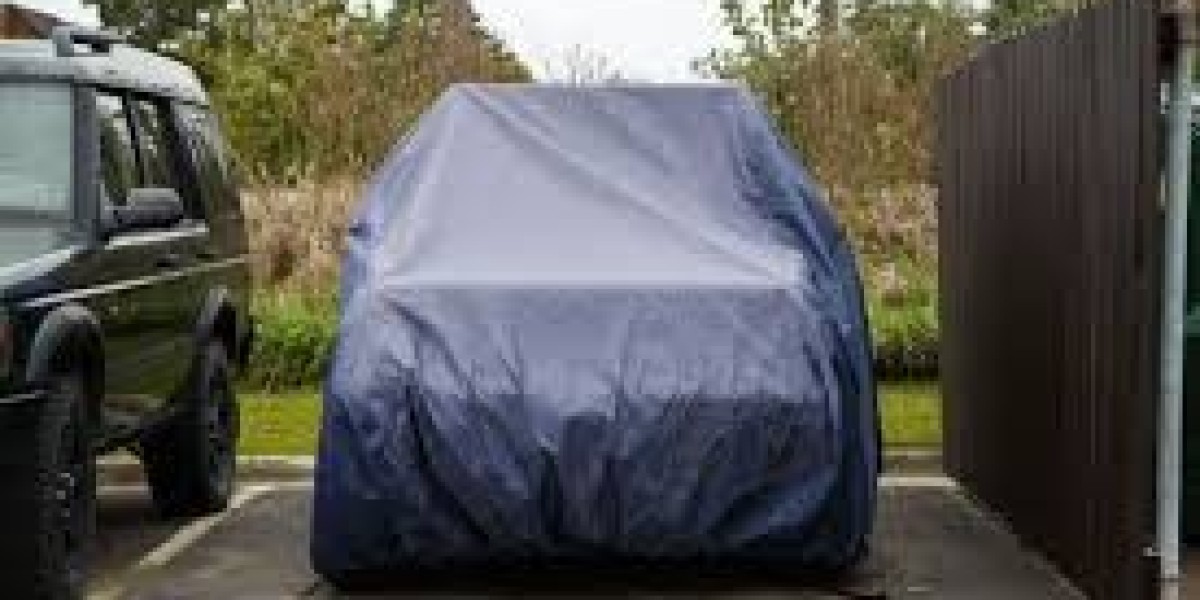Every vehicle owner knows the value of protecting their car. Whether it’s a brand-new sedan, a rugged SUV, or a prized classic, exposure to the elements can significantly reduce your vehicle's lifespan and resale value. This is where vehicle car covers come into play, offering essential protection against weather, debris, and other potential hazards. In this guide, we’ll explore everything you need to know about car covers and why they are an investment worth making.
Why Vehicle Car Covers Are Essential
A vehicle car cover acts as a protective barrier between your car and the external environment. Some of the key reasons to invest in a quality car cover include:
1. Protection from Weather Elements
Rain, snow, hail, and UV rays can damage your vehicle's exterior. Prolonged sun exposure can fade paint and crack dashboards, while snow and ice can harm wipers, mirrors, and paintwork. Car covers shield your vehicle from these elements, keeping it looking newer for longer.
2. Prevention of Scratches and Dings
Even minor scratches can reduce your car’s value. A cover prevents accidental scratches from children, pets, or passing objects. It also protects against minor dings from shopping carts or garage mishaps.
3. Dust and Dirt Prevention
Dust, pollen, bird droppings, and tree sap can accumulate over time, damaging the paint and requiring frequent washing. A car cover minimizes these issues, saving time and money on cleaning and detailing.
4. Enhanced Security
While car covers aren’t a direct anti-theft measure, they can act as a deterrent. A covered vehicle is less visible and less tempting for opportunistic thieves. Some high-quality covers come with locking systems for extra security.
Types of Vehicle Car Covers
Choosing the right car cover depends on your environment, usage, and vehicle type. Here are the main types:
1. Indoor Car Covers
Designed for garages or indoor storage, these covers focus on preventing dust, scratches, and minor dings. They are lightweight, breathable, and easy to remove.
2. Outdoor Car Covers
Outdoor covers are made of heavy-duty, weather-resistant materials. They protect against rain, snow, UV rays, and even bird droppings. Many outdoor covers feature elastic hems and reinforced seams for a snug fit.
3. Custom-Fit Covers
Custom-fit covers are tailored to your specific vehicle model, offering maximum protection. They hug every contour of your car, reducing wind flapping and providing a polished appearance.
4. Universal Car Covers
Universal covers are versatile and fit a variety of vehicles. While they may not provide a perfect fit, they offer a cost-effective solution for general protection.
5. Specialty Covers
Some car covers are designed for specific purposes, such as winter covers, UV-protection covers, or dustproof covers for long-term storage. Choosing a cover based on your needs ensures optimal protection.
Material Matters
Car covers are made from various materials, each with unique benefits:
Polyester: Lightweight, affordable, and water-resistant. Ideal for everyday use.
Polypropylene: Durable and breathable, often used for outdoor covers.
Cotton Fleece or Flannel: Soft on paint, suitable for indoor use and classic cars.
Multi-layered Fabric: Combines weather resistance, breathability, and scratch protection.
When selecting a car cover, consider factors such as weather exposure, storage location, and vehicle size.
How to Properly Use a Vehicle Car Cover
To get the most out of your car cover, follow these tips:
Clean Your Vehicle First: Dirt and debris can scratch your paint if trapped under the cover.
Choose the Correct Cover Size: Ensure the cover fits snugly to prevent wind from blowing it off.
Secure the Cover: Use straps or tie-downs for outdoor covers to prevent flapping during windy conditions.
Store Properly When Not in Use: Keep the cover in a clean, dry place to prolong its lifespan.
Benefits Beyond Protection
Investing in a car cover isn’t just about defense. It also contributes to:
Maintaining Resale Value: A well-protected car retains its value longer.
Reducing Maintenance Costs: Less exposure to elements means fewer repairs and detailing expenses.
Convenience: Covers save time on cleaning and reduce the need for constant waxing or polishing.
Choosing the Right Vehicle Car Cover
When selecting a car cover, keep these factors in mind:
Climate: If you live in a region with harsh winters or intense sun, opt for a heavy-duty, UV-resistant cover.
Frequency of Use: If you drive daily, a lightweight, easy-to-remove cover is more practical.
Storage Space: Indoor covers can be smaller and softer, while outdoor covers are typically bulkier.
Security Features: Consider lockable covers for extra protection in high-theft areas.
Conclusion
A vehicle car cover is a small investment with a huge payoff. It protects your car from environmental damage, scratches, dirt, and more, while helping maintain its value and appearance. Whether you own a luxury vehicle, a family car, or a classic collectible, the right cover can make a significant difference in preserving your investment.
Don’t wait for damage to occur—cover your car and drive with peace of mind knowing it’s fully protected.








